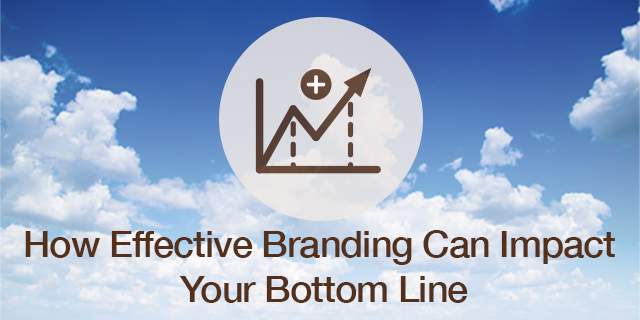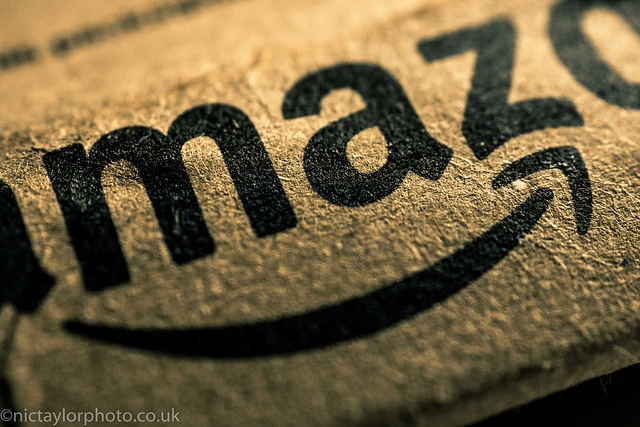
4 Tips to Get You Started Today
Branding is not just about getting your target market to choose you over the competition, but about convincing your prospects that you are the only one who can provide a solution to their problem. Your brand is an asset that has direct monetary value. According to Market Street Research, numerous studies indicate that the strength of a company’s brand has direct impact on financial metrics like sales effectiveness, market share, and margins. The investment you make in your brand will provide a monetary difference in both the short-term and long-term.
Here are four ways effective branding can impact the bottom line in business-to-business marketing:
1. Improve marketing ROI and sales effectiveness
A relevant, differentiating brand message impacts every level of your sales funnel. You can improve response rates, generate qualified leads, open new doors and boost sales effectiveness.
Online shoe retailer Zappos has differentiated its brand with an iron clad return policy and customer service that goes above and beyond. The idea of hassle-free online shoe shopping has been in Zappos' DNA from the beginning. Features like 24-hour customer service and a 365-day return policy ensures that Zappos shoppers walk away happy. Their tagline refers to their competitive advantage "Powered by Service." One of their most popular policies is “If the shoe fits, wear it. If not, ship it back - at no cost to you - because a huge inventory almost guarantees you'll find something else you like”.
Zappos is not the only online retailer to provide free shipping, but they had the big idea to make the return process a competitive advantage, building their brand around this customer benefit. Today, online footwear is a $3 billion business, and Zappos holds a fifth of the market. With 4 million customers, the company has doubled its sales every year since 1999. Read CEO Tony Hsieh’s tremendously inspiring book Delivering Happiness for powerful lessons he has learned in achieving his success and happiness.
2. Thought leadership creates a competitive edge
Positioning your company as a resource and thought leader in your industry builds trust, credibility, engagement, and familiarity. By creating a perception that this is the kind of company you “want” to do business with can offset lower-priced competition.
HubSpot, purveyor of content marketing tools, has had immense revenue growth (filing for a $100M IPO in 2014), an active and growing user base, and their own marketing techniques generate a lot of buzz, in return building familiarity and credibility in their industry.
For example, there is probably nothing hotter in marketing right now then "content marketing." HubSpot became a leader in this movement, as a great marketer of content marketing, evangelists about content marketing, and they have been great content marketers about content marketing. Specifically, their founders, Brian Halligan and Dharmesh Shah, wrote the marketing book Inbound Marketing: Get Found Using Google, Social Media and Blogs. No better example of being a thought leader than coining the term that is now used by all digital marketers; Biran Halligan coined the term inbound marketing in 2005. All of these elements help HubSpot stand out from their competitors and be successful.
3. A cohesive brand across all platforms creates synergy
When you have a strong, unified brand image and message you can leverage all elements of your strategy to support each other, from your website to advertising to content marketing.
Amazon's logo was the perfect choice when it comes to building a consistent brand. The arrow points from a to z, as a way to show that Amazon carries everything imaginable, and the curved arrow brings to mind a satisfied smile.
 By using the logo prominently across all marketing communications, packaging, social media sites and apps, Amazon has created a very cohesive brand. They also feature the same intuitive design and clean organization throughout the apps and website, so you can browse comfortably on any platform.
By using the logo prominently across all marketing communications, packaging, social media sites and apps, Amazon has created a very cohesive brand. They also feature the same intuitive design and clean organization throughout the apps and website, so you can browse comfortably on any platform.
Today the icon is so recognizable that most people can tell by the arrow alone where a brown cardboard box is from.
4. Rebranding improves performance
A rebranding campaign could not only breathe new life into your business, but also be an internal rallying point. A new direction and strategy provides internal alignment, unifies, and improves performance.
In 2011, British Airways' made the decision to take steps to stimulate support for the brand among its 32,000 staff in advance of a re-launch campaign. British Airways had been plagued with challenges, including a cabin-crew strike, and global recession, driving the airline’s staff morale to an all-time low.
Using engaging, informative, integrated and motivational campaigns the airline sought out to unite a disparate workforce, from cabin crew and engineers to baggage-handlers and back-office staff. Social media, apps and video, were a key part of the strategy. More traditional channels, such as print, forums and intranet, also played a role.
British Airlines was able to communicate a new ownership structure, better economic outlook, resolution of the cabin-crew dispute, and most importantly, reignite the passion and belief in the brand. They created a new way of thinking that put customers at the heart of everything they do, and their entire workforce has a part to play.
Their strong internal buy-in also allowed them to develop, both through their communications and marketing, a consistent tone of voice and an emotional connection with their audience with the tagline “To fly. To serve”
Looking to get started today?
Miss Details Design specializes in brand strategy, brand management, and meaningful design. Contact us at [email protected] to increase your brand ROI.
